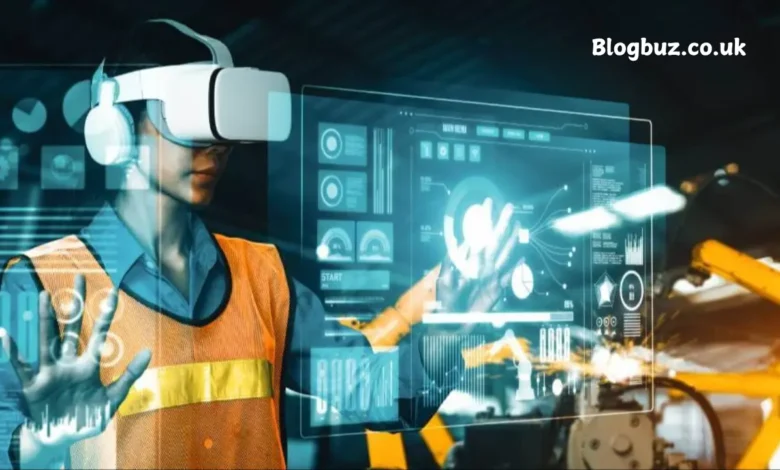Prizmatem: The Next Frontier in Visual Technology and Modular Design

In a society that is increasingly reliant on immersive experiences, adaptive design, and human-centered technology, Prizmatem is emerging as a transformative force. Although still a relatively new concept, Prizmatem is quickly gaining traction across various industries, including augmented reality (AR), user interface design, intelligent lighting systems, and educational platforms. But what exactly is Prizmatem, and why is it generating so much interest? In this in-depth article, we’ll explore the meaning of Prizmatem, its technology, real-world applications, benefits, and future potential. Whether you’re a developer, designer, educator, or tech enthusiast, this guide will help you understand how Prizmatem can redefine the way we interact with light, systems, and layered content.
What Is Prizmatem?
At its core, Prizmatem is a modular, prismatic framework that blends optical technology with digital interactivity. The term is derived from “prism,” symbolizing the separation and manipulation of light, and “system” or “element,” highlighting its layered and customizable nature.
Unlike traditional tech tools that focus on linear or static outputs, Prizmatem leverages a layered, refractive system — both literally and metaphorically. This enables it to transform visual data, user interaction, and content into a dynamic and adaptive experience.
Think of it as a digital prism: one that breaks down complex input (such as data, visuals, or learning modules) and reframes it through layers of color, context, and clarity.
Origins and Etymology
While Prizmatem is not yet a registered brand, it is gaining popularity as a creative, futuristic name for products and platforms focused on:
- Visual enhancement
- Modular education systems
- Augmented and mixed reality tools
- Creative software development kits (SDKs)
- Bright lighting and ambient systems
The flexibility of the name has made it especially popular in early-stage startups, futuristic concept designs, and open-source innovation projects.
Key Features of Prizmatem Technology
- Prismatic Modularity
- Prizmatem works on a layered approach, where visual or interactive components are broken down, much like a prism refracting light. Each layer can be manipulated independently, enabling custom interaction, design, or learning pathways.
- AI-Powered Rendering
- Most Prizmatem-powered frameworks utilize real-time AI rendering to dynamically adjust lighting, visuals, or user interfaces based on real-time conditions, user behavior, or device settings.
- High-Color Fidelity
- Just like Oakley’s PRIZM lenses optimize color and contrast for the human eye, Prizmatem’s software replicates this digitally, delivering lifelike color palettes and sharp clarity for immersive viewing.
- Sustainability and Energy Efficiency
- Many hardware prototypes that utilize the Prizmatem concept incorporate energy-saving photonic materials, thereby reducing power consumption in screens, glasses, or lighting systems.
- Developer-Friendly SDKs
- Platforms inspired by Prizmatem usually come with modular APIs and open-source SDKs for Unity, WebXR, Unreal Engine, and other creative environments.
Top Use Cases of Prizmatem
Augmented & Virtual Reality (AR/VR)
Prizmatem enhances AR/VR by improving visual contrast and reducing eye fatigue. Developers can create multi-layered digital worlds where color separation and depth rendering mimic the natural behavior of light as it passes through prisms. This leads to smoother transitions, better immersion, and reduced visual fatigue during extended usage.
Example: A VR meditation app using Prizmatem can adjust light tones in real time to sync with the user’s breath patterns or background music, calming both the eyes and the mind.
User Interface Design
Modern apps and websites demand interfaces that feel natural and intuitive. Prizmatem-powered UI frameworks use layered transparency, motion blur, and color adaptation to create “light-responsive interfaces.”
Example: A dashboard that automatically adjusts background light gradients based on the user’s timezone or energy levels — creating mood-enhancing digital experiences.
Education Technology (EdTech)
In the classroom, Prizmatem’s modular philosophy can revolutionize how concepts are taught. Lessons are divided into interlocking visual layers, allowing students to understand complex ideas step-by-step — like peeling the layers of an onion.
Example: A biology app displays the human body in prism layers — skeleton, muscles, and organs — each animated and interactive, with audiovisual cues triggered by touch.
Smart Home & Ambient Lighting
Intelligent lighting systems utilizing Prizmatem technology can dynamically adjust hue, warmth, and brightness in response to time, weather, or user preferences.
Example: A Prizmatem light panel near your workstation can simulate daylight in the morning, a neutral glow at noon, and a warm prism-like fade by evening — helping maintain your circadian rhythm.
Creative Tools & Digital Art
Graphic designers and digital artists love Prizmatem-inspired tools for their ability to generate layered textures, color maps, and real-time light distortion. It’s especially powerful in VFX and 3D modeling.
Example: A 3D artist uses a Prizmatem plugin for Blender to create a translucent crystal model that changes its color based on scene lighting — without post-processing.
Real-World Platforms Using Prizmatem-Like Technology
- Adobe Firefly (AI Visual Layers) – Uses light-based neural rendering to adapt creative content.
- Meta Quest (AR Visual Enhancement) – Uses contrast-layer optimization in AR headsets.
- Philips Hue – Smart lighting that adapts in real-time to environment and mood
- Unity VFX Graph – Visual layer stack manipulation through code blocks
Scientific Foundation Behind Prizmatem
Prizmatem integrates concepts from multiple scientific domains:
| Field | Contribution |
|---|
| Photonics | Micro-prism optics for light separation |
| Neuroscience | Color psychology and visual comfort |
| Computer Vision | Real-time environmental adjustment |
| Human-Computer Interaction (HCI) | Adaptive UI/UX modeling |
| Machine Learning | Predictive rendering and optimization |
Research in optical coherence, retinal response, and modular light interpretation has driven the development of such frameworks that replicate human light perception.
Benefits of Using Prizmatem
- Enhanced user engagement through dynamic visuals
- Increased time on screen without causing visual fatigue
- Lower development time due to modular, plug-and-play design
- Higher performance on low-power devices (especially mobile & wearables)
- Greater personalization for users with accessibility needs
- Stylish, futuristic aesthetic appeal for UI/UX and product design
Challenges & Considerations
Despite its potential, Prizmatem is still an emerging concept. Challenges include:
- High cost of custom prism materials (in hardware applications)
- Requires GPU/AI support for real-time color shifting
- Limited availability of open-source platforms fully supporting it
- Risk of over-design or distraction if not implemented carefully in UX
That said, as AI and smart rendering continue to evolve, these barriers are rapidly shrinking.
The Future of Prizmatem
The future of Prizmatem looks bright — and prismatic. As computing moves toward spatial interfaces, immersive education, and bio-synced environments, frameworks like Prizmatem will define the next generation of interaction.
Imagine:
- Smart glasses that project layered text or images onto your retina
- Hospitals using prism-based screens for 3D anatomical displays
- AI-powered lighting that shifts subtly during conversations to boost focus
- Mobile apps that use prism design to reduce blue-light exposure
Conclusion
Prizmatem is more than just a tech trend — it’s a vision for enhancing the human experience through the layered beauty of light and modular design. Whether you’re a developer, designer, educator, or entrepreneur, exploring Prizmatem can offer a new frontier of innovation and interaction.
You May Also Read: Video Production and Animation Northern Ireland: Transforming Business Communication Through Visual Storytelling




